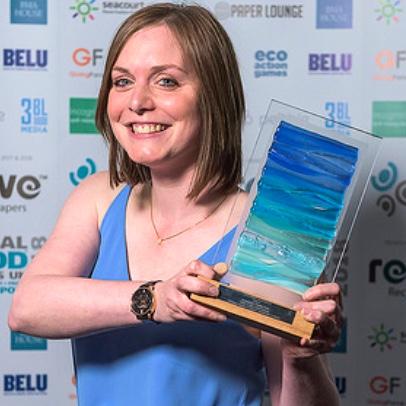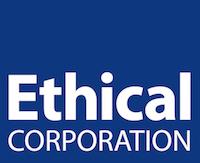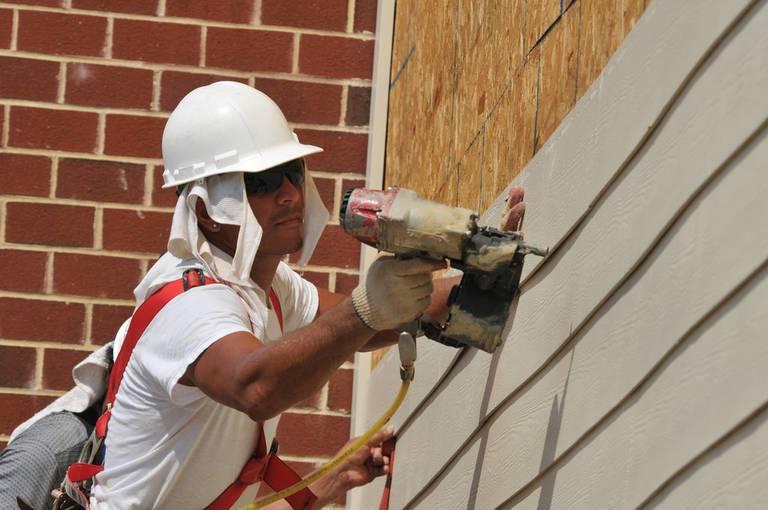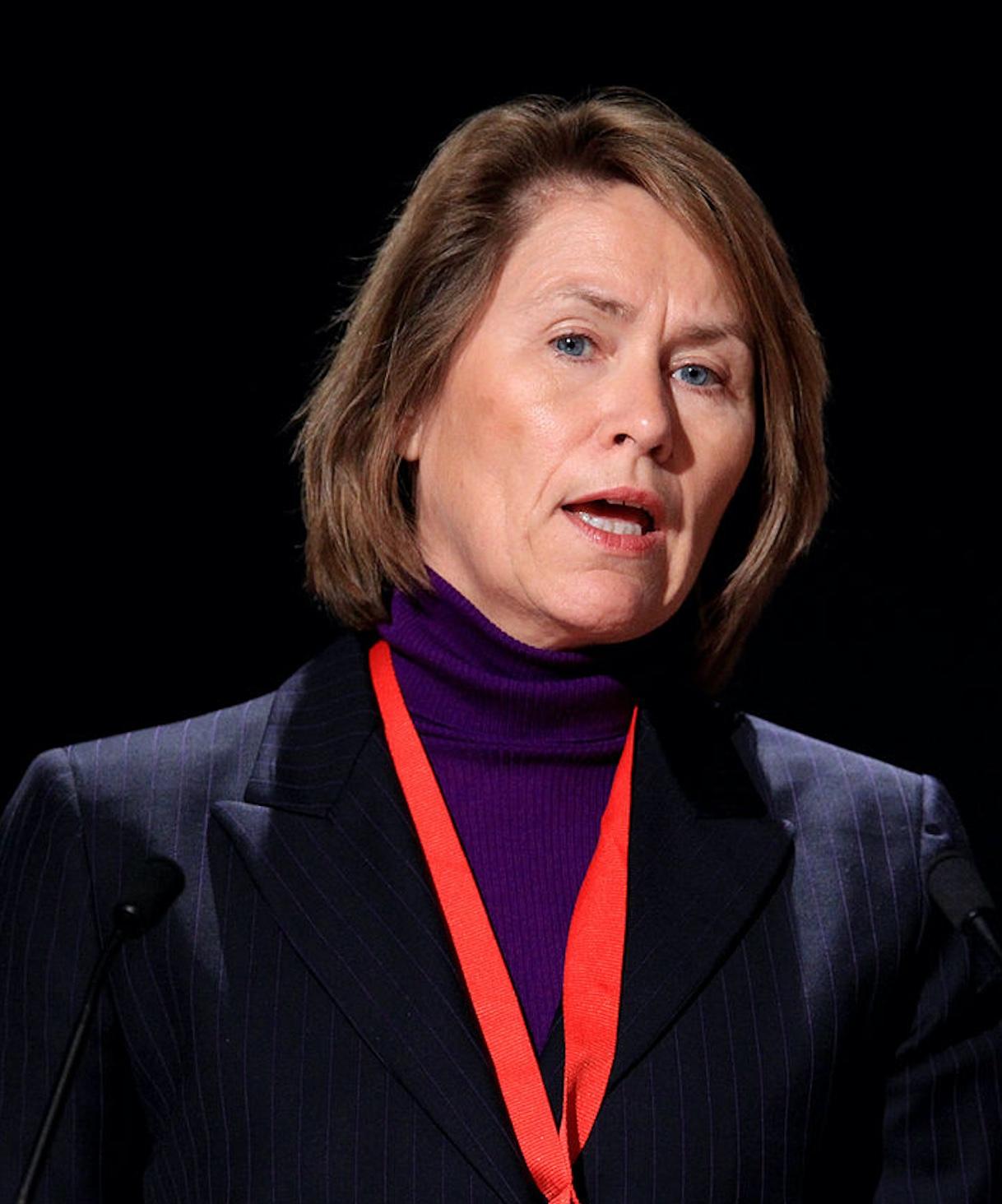Walking, wearing, and eating, the talk at the Global Good Awards


Pictured: Ingrid Weel - Global Goods Awards 2018
Realising that the challenges and opportunities of sustainability reach far beyond our shores, the organisers of the National CSR Awards, which had successfully held three annual events, recently rebranded and relaunched as the Global Good Awards to recognise the best in sustainability, CSR, NGOs, charity and social enterprise. We were lucky enough to spend an evening celebrating the award winners and eating delicious vegan food.
Turning the tide on organisational quackery
Wikipedia defines a quack as “fraudulent or ignorant pretender to medical skill". Ed Gillespie, the MC of the Global Good Awards (GGA), hosted at the British Medical Association, opened the event by calling out the organisational quackery that infects our world. He hailed all the award winners as being leaders who are doing good in the face of this fakery.
Gillespie, the cofounder of the sustainability agency Futerra, reminded that such quackery is writ large with examples such as the recent collapse of construction giant Carillion which racked up debts of up to £2 billion with thousands of job losses while directors pocketed wildly excessive bonus and salaries.
On the other hand, he acknowledged that there is considerable positive news is out there, citing that the growing BCorp movement in the UK that now has over 1000 organisations with a combined turnover of over £1B.
Keynote speaker was the award-winning writer, editor, advisor and speaker Martin Wright, who enlightened the audience with a persuasive case for optimism. Wright shared his inspiring personal story from the frontline of environmental and developmental issues meeting fishermen in Bangladesh, and explaining why solar and mobile technology is now benefiting everyone and that businesses need to embrace commercialism with a can-do attitude.
The expert sustainability communicator suggests that the pessimistic approach of making people feel guilty is over and activism now needs to be relentlessly focused on solutions.
Blown away by the diversity and calibre of winners
The 63 short-listed organisations were competing for recognition in 16 categories. The awards rewarded organisations big and small, from Hackney’s innovative Toast Ale, made from bakery leftovers, to the global pharmaceutical company GSK for their fundraising work with Save the Children.
The awards also recognised partnerships between big and small, such as that between FMCG giants, Unilever and community organizers Project Dirt. Even football club Everham received a silver award, and London’s The Soap Co. was multiple award winners, in partnership with agency The Communications Store. A tangible example of solution-focused positive action is the millions of acres of protected by Cool Earth, who won gold for the International Sustainable Community award for their Ashaninka Partnership.
The coveted ‘Outstanding Individual Corporate Leadership’ award was taken by James Thornton of Client Earth for winning several landmark cases on air quality. The Crown Estate won the ‘Overall Excellence in Corporate Responsibility’ with projects delivering on their promise of ‘creating brilliant places’.
Global Good CEO, Karen Sutton says: “The Global Good Awards continues to grow in its fourth year. In 2018, we wanted to broaden the scope to reach organisations of all shapes and sizes and were absolutely blown away by the diversity and calibre of the results.”
Walking the talk
The Global Good Awards certainly walks the talk to ensure the gala is truly sustainable. Among the many initiatives taken was the carbon balancing of the event in partnership with headline sponsor Denmaur Independent Papers, the company behind Revive recycled paper carbon that offsets all the carbon emissions via the World Land Trust.
The GGA made history with the first ever fully vegan menu at an award ceremony. This bespoke menu did not disappoint with street food options of Indian, Italian and Mexican cuisine and a beverage selection including vegan wine, Toast Ale, and Belu water.
With an eco dress code, guests were encouraged to dress with colour and a conscience—a jacket made with Ribena plastic wraps and the paper dress made worn by organiser Karen herself were clear standouts.
Gold Award Trust Mark
The ceremony closed with truly deserving applause for the organisers of the GGA as they were assessed for criteria of ethics and transparency and was accredited by the Independent Awards Council the first ever Gold Award Trust Mark.
We finish this review with a comment from headline sponsor, Danny Doogan, Director of Marketing and Sustainability at Denmaur Independent Papers: “We’ve loved being a sponsor for the Global Good Awards for the second time running. It’s so inspiring to see all the good work happening in sectors from soap manufacture to snacks, charitable giving and printing. Congratulations to our winners!”
Sarah Sanders Vs. Red Hen Results: Eye-Rolls 1, Yelp Reviews 0


In case you were asleep or had your eyes glued on World Cup matches all weekend, yet another political controversy has been boiling over since Friday evening. The White House’s press secretary, Sarah Huckabee Sanders, decided to escape Washington, DC, for a meal in Lexington, Virginia, which is almost 200 miles away, or a three-hour drive, from the nation’s capital (could you blame her?).
As the story goes, Sanders and her party were asked to leave shortly after they started dining at The Red Hen, which is described on TripAvisor as an “American, vegetarian-friendly” restaurant in the center of this town home to 7,000 people. The owner of the restaurant told the Washington Post that she asked the group to leave on moral grounds, noting her staff’s feelings about Sanders’ stance on gay rights and the current White House’s role in the child separation crisis along the U.S. southern border.
Sanders tweeted her displeasure about the episode on Twitter Saturday morning, and as they say, the rest is history, or hysteria:
[embed]https://twitter.com/PressSec/status/1010536237457924096[/embed]
To sum up the feelings of the Trump White House’s supporters, this sordid tale is the latest example of liberals and the radical left hating anything, and anyone, tied to the president. It is a fair argument to suggest these people take the advice Michelle Obama gave a couple years ago, when she told the Democratic National Convention that “when they go low, we go high!” In the pro-Sanders camp, the feeling is that taking the high road is the constantly missed exit for anyone opposing Donald Trump.
Supporters of The Red Hen point out that Sanders is working for a presidential administration that supports the decision of a business to deny service to gay Americans – exemplified by the recent Masterpiece Cakeshop Supreme Court decision. To anyone denied service because of the race, ethnicity or sexual orientation, Sanders’ ratting out of the restaurant on Twitter comes across as hypocritical.
Here’s the question: who wins the argument, Sanders or The Red Hen?
The result is obvious: the winner is everyone who did not weigh in on this controversy by writing a review about The Red Hen on review sites such as Yelp, TripAdvisor, or the restaurant’s Facebook post about Coq au Vin made with heritage breed chickens or a summer salad.
In addition, there is a clear lesson about civility that rabid supporters of both Team Sanders and Team Red Hen must take to heart: fighting a proxy war by giving one star or five stars on Yelp is about as illuminating and effective as scoring all of one’s news from solely Fox News or MSNBC.
The Sanders-Red Hen spit-spat is disturbingly formulaic: those who opposed how Red Hen treated Sanders grabbed their digital slingshots and flung one-star reviews on Yelp and other sites. “Reviewers” who supported the actions of Stephanie Wilkinson, the restaurant’s owner, responded in kind with five-star reviews. The madness went on, even though many reviewers never sampled The Red Hen’s cheese platters or short ribs due to the fact they live hundreds or thousands of miles away from Lexington.
Forget about the scores, which as of now are about 1.5 on Yelp and 4.5 on TripAdvisor. Yes, the average is 3.0, which would make this a tie, but let’s dismiss any statistical analysis. The only winners in this debate are any adrenaline junkies on these web site’s technical support teams who are now tasked with cleaning up these web pages as fast as possible while removing any fake reviews.
The only losers could be any customer who was served the perfect pan-seared scallops or a chewy North Carolina grouper and want to add their two cents about The Red Hen’s culinary chops – because as of press time, reviews on both sites have been suspended until further notice.
Furthermore, any cries of over “who started it” are also yelps not worth shouting – whether it was a peeved Sanders tweeting Saturday morning, or a little-too-gleeful Red Hen employee who posted that the press secretary’s party was “kicked out” of the restaurant – only to backtrack on that claim while removing his Facebook post.
Here is another reality: Stephanie Wilkinson will also live with the consequences, positive and negative, as this story is yet another chapter of how more businesses – large and small – wade into this era of brands taking stands. Whether the disputes are over gun control, bathroom bills or immigration, more businesses will find they have to make a decision, as attempting to stay neutral is hardly an option, either (as Delta Airlines has learned).
Policy debates are painful. Articulating one’s stance without ad hominem barbs is a challenge in this hyper-polarized era. But clicking one- or five-stars on a restaurant or travel web site over a policy dispute is the political discourse equivalent of a hit-and-run.
Be sure to follow this and other stories in our Brands Taking Stands newsletter.
Image credit: The Red Hen/Facebook
Webinar - Tetra Pak, PGGM, Coca-Cola HBC & WBCSD on SDG Reporting


The increasing focus and push towards the UN Global Goals and 2-degree target requires businesses to disclose accurate data to showcase future risks, demonstrate the long-term value of the business and show their impact on the SDGs. But how do you successfully integrate the SDGs into your reporting process?
To help you properly report on the SDGs, 4 senior leaders are ready to share their experiences and strategies live. Join Ethical Corporation on Thursday, 12th July, at 2pm BST for their free online webinar with:
- Mario Abreu, Vice President Environment, Tetra Pak
- Piet Klop, Senior Advisor Responsible Investment, PGGM
- Michael Dickstein, Group Sustainability Director, Coca-Cola Hellenic Bottling Company
- James Gomme, Director, Sustainable Development Goals, WBCSD
In this 1-hour webinar, you will learn how innovative businesses are demonstrating their progress on ambitious targets through SDG focused disclosures.
- Identify what is relevant for SDG reporting
- Map against your operations on a local, national and regional level
- Measure your impacts against the SDGs
- Properly communicate your impacts against the SDGs
Can’t join? Sign up anyway to receive the full post-webinar recordings: https://attendee.gotowebinar.com/register/3224734954935976193?source=raweb
Media Contact:
Ed Long
Project Director
Ethical Corporation
+44 (0) 207 375 7188
How Today's Tech Workers Are Using CSR To Motivate Action on Trump Border Policy


In the early days of corporate social responsibility, generating consumer interest seemed to be the main goal. Investor motivation has become an increasingly important bottom line benefit in more recent years. Now CSR is flexing its muscles on yet another level, as corporate employees pressure their companies to stop doing business that aids and abets the new Trump Administration policy of separating immigrant families at the border.
The roots of corporate social responsibility
Corporate social responsibility is a mature trend with roots in the establishment of charitable foundations by high profile companies.
Triple Pundit recently took a look at the CSR records of two iconic US toy makers, Hasbro and Mattel, and in both cases the charitable foundation work of the 20th century paved the way for integrating CSR principles into company operations in the 21st century.
Companies like these recognize that in order to to keep growing, they cannot continue walling corporate social responsibility and ethical behavior off in a separate space.
Triple Pundit has also been taking a close look at companies like Levi-Strauss, where the strategic application of CSR principles has grown far beyond the factory gates both for the sake of ethical principles and bottom line considerations, too. AB-Anbev and Coca-Cola demonstrate how CSR principles can travel seamlessly from a company to its supply chain.
CSR is put to the test
Until now, company CEOs have spearheaded the pushback against Trump policies, at least in terms of grabbing the media spotlight. That pattern was in evidence immediately after Inauguration Day in 2017, when Trump launched a new travel policy targeting Muslims.
By midyear in 2017, executive leaders were also protesting Trump's decision to pull out of the Paris Agreement on climate change. In addition to protesting the move, hundreds of US businesses have taken active steps to continue promoting the clean energy transition.
Earlier this year, companies like Dick's also took the lead in acting on common sense gun control (Levi-Strauss is another good example on gun control).
The new family separation policy circles back to the so-named "Muslim ban," and that's where the tech employee empowerment movement is breaking new ground.
To put it simply, employees are on the front lines when companies strive to internalize ethical behavior, and that is bound to have an impact on the way they view their employer's business model.
That tension can be muted during economic downturns and in sectors where jobs are hard to come by. In the tech sector those two inhibiting elements have faded somewhat -- and in the meantime, the Trump Administration has put CSR principles to one test after another.
Workers using CSR to leverage company resistance
For all the pushback against Trump immigration policies at the executive level, the simple fact is that some of these same companies do business with federal law enforcement agencies and their partners. These companies are now directly in the crosshairs of blowback against the new family separation policy.
To be clear, shareholders are also reacting. The big difference this time around is that employee action is beginning to attract media attention.
One high profile example is Amazon. The company is getting a visceral employee response for the use of its facial recognition technology, Rekognition, by law enforcement agencies in support of the Trump family separation policy.
A recent employee letter from a group of employees to Amazon CEO Jeff Bezos has received wide circulation in the mainstream media and in financial media as well, including Fortune magazine:
The letter from Amazon employees to Bezos also cites President Donald Trump’s “zero tolerance” policy at the U.S. border as a cause for consternation.“In the face of this immoral U.S. policy, and the U.S.’s increasingly inhumane treatment of refugees and immigrants beyond this specific policy, we are deeply concerned that Amazon is implicated, providing infrastructure and services that enable ICE and DHS,” the letter reportedly states.
The Washington Post also reports that Microsoft and Google came under under fire by their own employees even before the new family separation policy took effect:
Google responded to a firestorm of employee resignations and public outcry surrounding a Defense Department deal. Executives said they would not renew an artificial intelligence contract for software that could help the Pentagon analyze drone video. Soon after, Google said it was banning the development of AI that can be used in weapons.
When boycotts work: employee engagement edition
The sudden burst of employee activism is especially interesting in the context of the boycott movement.
Triple Pundit took note of an apparent rise in high profile boycotts in the runup to Election Day 2016 and afterwards, when the Sleeping Giants and #grabyourwallet campaigns took off, and we have been keeping an eye on the trend ever since.
Boycotts that focus on consumer behavior are notoriously difficult to sustain, let alone succeed, but they can influence corporate behavior on the business-to-business level. Specifically, boycotts can succeed when brands pull their advertising dollars.
The power of brands to influence corporate behavior became clearly evident last year, when the conservative pundit Bill O'Reilly lost his Fox show after news of sexual harassment payouts surfaced.
The threat of an employee boycott adds another element to the business-to-business angle.
That threat can loom especially large in the tech sector, where competition is hot for the best and brightest talent. With a tight labor market, employees who have a deep, intensive disagreement with their company over CSR principles have a strong motivation -- and a fairly good opportunity -- to look for work elsewhere.
Even if significant numbers of existing employees don't jump ship, the negative press could influence a company's ability to recruit fresh talent in the future.
Whither Facebook?
NBC News has reported that Hewlett Packard Enterprise, Thomson Reuters, Microsoft, Motorola Solutions and Palantir are among the companies with active contracts at ICE, but it's too early to tell if the recent employee actions will spark a wider trend. External factors, like an economic downturn, could also weigh heavily on the growth of employee activism.One tech company that appears to be unaffected by the uproar is Facebook, which is enjoying a raft of glowing praise by the media for hosting high-dollar fundraisers in aid of families separated at the border.
That's a fortunate turn of events for Facebook, but it's rather ironic considering that one target of the Amazon employee letter is the big data company Palantir, which was co-founded by Facebook board member Peter Thiel.
The letter reportedly demands that Amazon boot Palantir from Amazon Web Services, and a look at the company's business model demonstrates why.
Aside from the Palantir's involvement in controversial law enforcement practices, Thiel himself has a history of anti-immigrant activity. He first emerged as a registered delegate for Trump during the 2016 primary campaign and provided other material support to the Trump campaign through to Election Day. He continues to serve as an adviser to Trump.
Got all that? Triple Pundit will post and update if the ripple of employee activism hits Facebook and other companies, too.
Photo (cropped): William Warby/flickr.
World Green Building Council: Employee Productivity Improves with Smart Construction


Companies that invest in environmentally sound buildings not only save money but incentivize better productivity from their workers.
That’s according to a report by the World Green Building Council, which looked at cost savings, productivity levels and other advantages experienced by companies that invested in green building environments.
Doing Right for the Planet and People: The Business Case for Health and Wellbeing in Green Building summarizes the findings of 11 companies around the world that invested in environmentally sound buildings and tracked savings not only in resources but in worker absenteeism and presenteeism (reduced productivity at work).
Examples from the survey included Akron Children’s Hospital, which noted a net energy savings of $900,000 and 48 percent less carbon emissions than the average US hospital; Floth, a sustainable building consultant in Australia ,which found not only happier employees but a reduction in worker sickness reports; and Delta Development Group in Hoofddorp, the Netherlands, where employees noted a 21 percent improvement in air quality and 92 percent benefit from better working environments.
But the feedback from WorldGBC members also revealed that certain operational and planning procedures increased those benefits.
- Employees satisfaction spiked when they had a role to play in co-designing the new eco-conscious space.
- Low carbon emissions weren’t the only selling point of green construction. For occupants, good lighting, smart design and attractive greenery were just as important as the materials that were used in the construction and their ecological benefits.
- The biggest financial benefits of green buildings is gained when impacts on the environment and occupants are addressed ahead in planning.
The report coincides an effort by European banks to create a new green mortgage scheme that would incentivize energy efficient construction across the EU. Backers of the pilot program include Nordea Bank, ING Bank and Societe Generale. WorldGBC is also backing the initiative.
According to the WorldGBC, nearly 40 percent of global emissions can be attributed to the construction sector. So to encourage changes, the council is also backing a new green building construction accelerator that can target regional areas in need of sustainable
The project has encouraged new “green” construction in several high-density areas like Bogota Colombia, where 20 regional partners are designing a new policy on energy efficiency. Other partners in Panama and Guatemala are also working to transform the way construction is addressed in urban areas.
The organization’s annual World Green Building Week, which takes place this year September 24-30, will be focusing on those efforts, encouraging local residents to explore the process of creating more sustainable and green communities.
Flickr image: Neal Snyder/US Army Environmental Command
Social Media Companies Find New Challenges in Accessing Personal Data


The Wide World Web was once unfettered territory for social media companies. Pioneers that could figure out a way to interpret consumers’ online habits and use that inquisitive data to make money has been by and large, an assumed byproduct of today’s internet age.
But that landscape is quickly changing.
Local campaign disclosure laws and data mining
Earlier this month, after news broke that Facebook and Google may have sold advertising that could indirectly influence voters in recent primaries, Washington State stepped up to the plate. It seems that Washington and Seattle’s laws are broader than those of many other areas of the country, requiring greater disclosure to the public.
Companies must disclose the “exact nature and extent” of advertising they sell that impacts consumers in the state. Cost, advertisers’ information and other details must also be made public when requested. And according to privacy advocates and one recent story by a local publication, data pertaining to local elections were not released by the two companies when asked.
Washington State Attorney General has since announced a lawsuit against the two social media giants, specifically for failing to maintain and disclose “documents and books of account” that detail campaign advertising during the past three years as the law specifies.
The lawsuit is an example of where public entities, armed with the teeth of laws that have been on the books for decades are dusting them off to investigate and regulate newer, global business practices that they say infringe on the rights of residents.
Europe's data protection regulation and social media
But social media businesses are also finding that navigating laws when it comes to accessing personal data is about to get much more complicated, especially if those companies intend to make money from the process.
Privacy advocates in the European Union have been trying for years to impose stricter rules when it comes to social media companies’ data protection methods. In particular, Facebook, Google and its subsidiaries Whatsapp and Instagram have frequently been in the cross hairs of privacy advocates that maintain the companies are designing algorithms to sweep up personal data from a broad spectrum of uses and locations.
On June 1 the EU’s onerous General Data Protection Regulation (GDPR) went into effect with stiff, recurring penalties for companies that violate its requirements.
What makes the GDPR law particularly thorny for big Internet players like Google and Facebook is that its requirements don’t just apply to companies that are located within the EU. It applies to the access that a business not located in France, or Germany or another EU nation has within its borders as well.
According to Max Schrems, an Austrian attorney who has been after Google and Facebook for years for their data mining practices, the two companies are already in violation of EU laws. They could face billions of dollars in fines – as much as 4 percent of their profits each consecutive time the enterprises violate the law.
Adherence to the law means iron-clad user agreements that specify the data the company is gathering and ensures consent. It’s a procedure that companies like Facebook may find hard to adhere to, say experts, who note that the company doesn’t just benefit from traffic on its site but others around the web.
Facebook CEO Mark Zuckerberg has assured the EU Commission that the company intends to adhere to the regulation. One of the company’s answers to the problem involves developing software that allows users to click on and see all the places their data is coming from when it arrives at Facebook. It also may give users the ability to wipe out that data and control such traffic of information.
Whether this will satisfy privacy czars in all EU countries (who independently have the power to investigate and lodge complaints) is yet to be seen.
And makers of mobile phones that draw up agreements that “force” users to reveal personal data in order to use the apparatus they buy (many times with a choice of opting out later) may be skirting the GDPR law as well.
According to Schrems, had laws like the GDPR been in place years ago, the Cambridge Analytica fiasco, in which users found out after the fact that the company was accessing Facebook data, wouldn’t have happened.
“If we enforce [this] properly, we should be able to get a balance in the digitalized age,” Schrems told CNNMoney. “In the end you should be able to use Facebook without worrying 24/7 about your data,” he said.
Flickr image: mkhmarketing (start bloggingonline.com)
U.S. EPA Drops The Biofuel Ball, Energy Dept. Picks It Up


A strange dynamic is at play between the U.S. Environmental Protection Agency and the U.S. Department of Energy. EPA Administrator Scott Pruitt is clearly determined to toss climate action aside in favor of keeping U.S. fossil fuel stakeholders afloat, while DOE is forging ahead with new initiatives to promote biofuel and other renewable resources in the US.
Pruitt's EPA is also backing away from polices that prevent water and soil contamination, and DOE is beginning to pick up the slack in those areas as well. In a new study, DOE demonstrates that biofuel production could provide a solid bottom line argument for reclaiming waste and preventing water and soil pollution.
A spark of biofuel gold in the muck
When you think of biofuel, corn ethanol may be the first idea that comes to mind. The new Department of Energy report goes off in a different direction to seek a host of other sustainable opportunities for biofuel production in the US.
DOE lists cattle waste, wastewater, grease from restaurants, food waste and more as potential feedstocks. These waste resources can be found just about anywhere in the US. The new report aims at tackling one of the obstacles to exploiting these riches, namely, lack of information:
...These organic wastes serve as potential biofuel feedstocks, and they are available just about anywhere across the nation. However, industry lacks information about the locations of greatest concentration so it can boost biofuel production while giving human health and the environment a helping hand.
As for the technology needed for waste-to-biofuel conversion, DOE proposes one promising pathway, hydrothermal liquefaction:
HTL mimics the geological conditions the Earth uses to create crude oil, using high pressure and temperature to achieve in minutes what has typically taken millions of years. The resulting material is similar to petroleum pumped out of the ground, but also contains small amounts of water and oxygen.
Valuable byproducts like phosphorus can also be reclaimed through HTL.
Refining the biocrude into usable biofuel is the next step, and DOE's Pacific Northwest National Laboratory has already demonstrated that conventional oil refining methods can be adapted for some "wet wastes" like wastewater sludge and algae.
The new U.S. waste-to-energy industry: location, location, location
The Pacific Northwest National Laboratory paired with the National Renewable Energy Laboratory to produce the new report. The team found that the average annual potential for waste-to-energy biofuel crude production in the U.S. is about 5.9 billion gallons (that's gallons, not barrels).
Municipal wastewater (1.1 billion gallons) and manure (2.7 billion gallons) account for the lion's share of the total. That leaves the door open to leverage economies of scale where human and livestock populations are the most dense. For human populations that includes the eastern U.S. and major cities across the US.
Manure-producing operations take up much of the slack:
The team found the Midwest and Great Lakes region to have the highest resource availability, with a large quantity of smaller individual sites throughout Ohio, Indiana, Illinois, Iowa, and Missouri, and several large concentrated animal feeding operations in Michigan, Wisconsin, South Dakota, Nebraska, Kansas, Oklahoma, and Texas. Concentrations of this resource are significant also in California, Washington, Idaho, Utah, and southern Arizona, with resource availability shown as well in North Carolina, Pennsylvania, and New York.
The contents of grease traps from restaurants and other retail food operations (1.16 billion) are also a significant source, with the added advantage that the conversion rate to biocrude is highly efficient.
Another area of interest is food waste (.9 billion), though according to the report the conversion rate for biocrude production is lower for food waste than for other sources.
How biofuel can protect the environment
The report is primarily a technical document. However, in a recent press release announcing the report, DOE picks up where EPA has left off (break added for readability):
...organic wastes can pack a punch to health and the environment.Wastewater sludge is costly to treat and dispose because of its significant volume and the presence of pathogens and other harmful pollutants. Livestock production is shifting towards fewer but much larger operations, resulting in quantities of manure that exceed local demand for fertilizer.
Food waste placed in the landfill produces large amounts of methane, an environment-harming greenhouse gas. And fats, oils, and grease deposited in sewer pipes can hinder wastewater flow to treatment plants, or harm fish and other organisms if they reach the ocean.
With more businesses -- including sports franchises -- interested in sustainable waste disposal, DOE's work could help kickstart the U.S. waste-to-biofuel industry into high gear.
Next steps for the research team include gathering more information that leads to an understanding of the logistical challenges involved and the cost-benefit tradeoffs.
Whither EPA?
All of this activity presupposes that the EPA's Renewable Fuel Standard will continue to support the addition of non-fossil fuel into the transportation sector.
That's not quite a done deal. EPA Administrator Pruitt has been accused of working to undermine the RFS, partly by providing a record number of biofuel waivers to refineries, creating an uproar among farmers and other corn ethanol stakeholders.
Pruitt has also moved to pull back on EPA oversight on a number of issues including water pollution and chemical regulation.
Then there's the climate change issue. Pruitt has a well documented history of denying that human activity is the driving force behind climate change. Things came to a head earlier this month, when a federal court ordered him to produce evidence for that conclusion.
That's a sharp contrast with Energy Secretary Rick Perry. He occasionally waffles on climate change when speaking in public, but under his leadership DOE has continued to prioritize climate action:
Addressing the effects of climate change is a top priority of the Energy Department. As global temperatures rise, wildfires, drought, and high electricity demand put stress on the nation’s energy infrastructure. And severe weather -- the leading cause of power outages and fuel supply disruption in the United States -- is projected to worsen, with eight of the 10 most destructive hurricanes of all time having happened in the last 10 years.
Somewhat ironically, an EPA-USDA partnership called AgStar still seems to be active. The program launched under the Obama Administration with the aim of getting more livestock operations to install equipment that draws usable biogas from manure. The process also renders the leftover solids into an inert compost -- a vast improvement over keeping raw manure in lagoons or spreading it on land.
Just this month AgStar issued an interesting report titled, Market Opportunities for Biogas Recovery Systems at U.S. Livestock Facilities.
AgStar notes that as of August 2017, about 250 digesters at livestock operations were recovering biofuel in the form of biogas, mainly at swine and dairy farms. Here's the money quote:
...The full potential to provide renewable energy is much greater: an estimated 8,100 U.S. dairy and swine operations could support biogas recovery systems. These systems may also be feasible at some poultry and beef lot operations as new and improved technologies for these manure types enter the market.
Go figure.
Photo (cropped): Pacific Northwest National Laboratory.
For Companies, A Personal Relationship with the Supply Chain Absolutely Matters


We constantly hear how a bevy of tactics, from third-party audits to harnessing the latest in technology to even artificial intelligence can make supply chains less wasteful, more efficient and most importantly – far more humane.
A survey completed last fall by a leading middle-market and supply chain research intuition concluded that suppliers that maintain strong and trustworthy personal relationships with their customers often grow at a faster rate than those reporting weaker ties to their clients.
The same could be said as to how larger companies reach out to their suppliers – a concept that is hardly new. Earlier this century, a North Carolina State University research project, amongst several conclusions, implored companies to not assume technology systems can take the place of - or make it easier to develop – personal relationships.
“Supply chain management by its very nature depends on relationships and connections,” opined Supply Chain Quarterly in its review of a recently published book. The authors of Fundamentals of Supply Chain Management: An Essential Guide for the 21st Century posit the very term “supply chain management” is not possible without meaningful relationships between vendors and customers. Another supply chain group, United Kingdom-based Chartered Institute of Procurement & Supply (CIPS), has also admonished companies to avoid “overly formal” relationships with their suppliers and to ensure clear communication channels in order to ensure transparency.
The question, however, is an obvious one: is this even possible when those suppliers are often halfway around the world? What is clear is that at a time when companies say they want an a more inclusive supply chain while reducing poverty worldwide (often in the quest to align with the United Nations Sustainable Development Goals, or SDGs), personal relationships are more important than ever.
Across any industry, this trifecta of building trust, offering assistance and repeated follow up is working out well for two companies in vastly different industries.
One company that says it has grasped the link between responsible sourcing and personal relationships is the natural personal care products company Burt’s Bees (which is owned by Clorox). The company depends on raw materials such as beeswax, coconut oil and shea butter for products ranging from lip balm to body wash. Sourcing from remote areas far away, of course, is not always the easiest task for a procurement team. To that end, one of Burt’s Bees responsible sourcing professionals, Shannon Hess, has explained how asking suppliers the right questions is a start if a company is committed to responsible sourcing – from inquiring how suppliers go about their daily lives on and off the farm, to whether they have access to the resources they need to produce these ingredients reliably in the first place.
“We’ve invested in these types of personal relationships that make up our supply chain, and they have paid off,” said Hess in another post. “They are part of our commitment to good growth — growth that is profitable, sustainable and responsible.”
The relationships Burt’s Bees strives to build with suppliers in regions such as east Africa can be strengthened by programs including trainings designed to help farmers or growers’ cooperatives improve their yields. As these suppliers watch their businesses become more successful, trust becomes cemented between the farmers and growers and Burt’s Bees buyers. When an unexpected disruption such as severe weather or a pest infestation occurs, Burt’s Bees procurement staff can respond quickly, as they understand the lay of the land and can address the problem almost as soon as it flares up. Hence Burt’s Bees has turned the idea of risk management on its head, allowing the company to be far more proactive than reactive - and meanwhile can make adjustments across its supply chain before it becomes far too late.
Another company that insists it has long humanized its supply chain is G Adventures, the Toronto-based global tour operator. G Adventures has long been able to provide travelers what it views as a more authentic and local travel experience by having local boots on the ground to gauge whether local sustainable business opportunities can help enhance its guests’ tours. The company long ago groomed a close partnership with an NGO, Planeterra, which identifies social enterprise opportunities aligned with G Adventures’ mission.
Planeterra’s projects are designed to build economic opportunities in the very places where G Adventures’ tours pass through. The NGO’s work in Hoi An, Vietnam with another nonprofit, STREETS International, helps provide 30 students a year score training and experience in hospitality and tourism. The result is Oodles of Noodles, a restaurant and social enterprise that hosts approximately 12,000 G Adventures travelers annually. In addition to securing work at the restaurant, students are also provided safe housing and health insurance along with the support they need to help them complete the program.
Over 2,600 miles away in Kathmandu, Nepal, another social impact project helps take young women and girls off the streets – addressing human rights abuses while providing secure jobs. Planeterra’s work with the local nonprofit SASANE led to the creation of the Sisterhood of Survivors. The program fights human trafficking by training survivors as paralegals, who in turn become the first point of contact for other victimized women through placements in police stations across the Kathmandu area. SASANE also has an outreach program in rural villages. Some of the women survivors identified by the nonprofit in those villages now have jobs teaching G Adventures’ travelers how to make traditional local foods – and those revenues help provide SASANE with a revenue stream for their programs while offering meaningful work in tourism for these survivors.
The lessons learned by Burt’s Bees and G Adventures are applicable to any company that says it is determined to have a more sustainable supply chain. But the key is investment: as in investment in time spent understanding your suppliers; investment in feet on the ground and ears ready to listen; and investment in staff, resources and funds that can help suppliers thrive for the long term.
Image credit: SASANE/Facebook
IKEA to ban single-use plastic products


Ikea, the world’s largest furniture chain, is to phase out single-use plastic products by 2020.
It will shun plastic straws, plates, cups, freezer bags and bin bags and plastic-coated paper plates and cups. Where possible, alternatives will be used.
The group intends that all the plastic products it handles will be made with recycled plastic by August 2020. It is already phasing out oil-based plastics.
To accelerate the changes Ikea has invested in its own plastics recycling plant.
The impact could be enormous. Ikea, founded and based in Sweden, has 363 outlets throughout the world, including the US, Canada, the UK, many European countries, Australia, Russia, China and Saudi Arabia.
Other new objectives are aimed at encouraging sustainability among Ikea customers.
The retailer is to offer a tap nozzle that could save more than 90 per cent of the water used at present, and, by 2025, will sell solar panels in 29 markets, up from today’s five. It has already invested in wind farms and has placed solar panels on its store roofs as part of its policy of using only renewable power and heat by 2020.
For animal protection enthusiasts it will introduce more vegetarian dishes into its store cafes.
An Ikea spokesperson said: “We don’t have all the answers yet but we are working together with our suppliers to find solutions that are good for both people and the planet.”
Torbjörn Lööf, chief executive of the parent Inter Ikea group, said: “Through our size and reach we have the opportunity to inspire and enable more than a billion people to live better lives, within the limits of the planet.
“Change will only be possible if we collaborate with others and nurture entrepreneurship. We are committed to taking the lead, working together with everyone – from raw material suppliers all the way to our customers and partners.”
Elena Polisano, the Greenpeace UK oceans campaigner, welcomed Ikea’s efforts: “We now need to see other big retailers come up with ambitious plans to cut the amount of throwaway plastic on their shelves.
“With one truckload of plastic waste entering our seas every minute and spreading everywhere from the Arctic to the Antarctic and to the deepest point of the ocean, we need bold action, and fast.”
The UK Prime Minster Theresa May has undertaken to end avoidable plastic waste by 2042. Predictably environmentalists want the target brought forward.
A hopeful note, however, is that a number of large corporations are now taking more immediate action.
Reckitt Benckiser, the UK multinational consumer goods company, now best known as RB, whose brands include Finish, Calgon and Durex, has committed itself to remove or reduce plastic packaging, to invest in research into alternatives, and to ensure that by 2025 at least 25 per cent of any plastic packaging used is recycled plastic. By 2025 all its plastic packaging is to be recyclable or reusable.
RB, which claims its policy will save more than 1,000 tons of plastic annually, published these decisions to mark World Environment Day.
The UK supermarket group Iceland has decided to scrap plastic packaging on own-brand products by 2023.
Tesco, Britain’s largest supermarket group, aims to stop using non-recyclable plastic packaging from next year, and the upmarket grocer Waitrose is phasing out black plastic trays, as they are difficult to recycle.
Quorn, the UK meat substitute company, is to remove 297 tons of unrecyclable black plastic from its supply chain by the end of June 2018. It intends to use only recyclable, reusable or compostable plastic by 2025. Chief executive Kevin Brennan said: “We view this as the right thing to do, despite the six-figure cost.”
On World Environment Day the UN reported that dozens of nations were acting to cut plastic use. Kenya has banned plastic bags, Sri Lanka styrofoam and China biodegradable bags.
The EU followed with proposals to ban single-use plastic products such as cotton buds and straws. Under the proposals all EU countries would have to collect 90 per cent of single-use plastic drinks bottles by 2025.
Further afield, the Indian government made a commitment to ban single-use plastics by 2022.
Prime Minister Narendra Modi said: “It is the duty of each one of us to ensure that the quest for material prosperity cannot lead to environmental degradation.”
Photo: Flickr creative commons 2.0
UN’s Faremo eyes artificial intelligence potential for SDGs at IPsoft ‘Digital Summit’


By Roger Aitken
Speaking at the Second Annual Digital Workforce Summit hosted by IPsoft in New York early this June, Grete Faremo, Under-Secretary-General and Executive Director of the United Nations Office for Project Services (UNOPS), said that the potential for Artificial Intelligence (AI) was “undeniable” and saw the possibility that AI has help “fulfill the UN’s sustainable development goals (SDGs).”
The event held at Cipriani’s in lower Manhattan, which saw around 600 delegates attend, witnessed a number of keynote addresses including being human in the age of AI from Professor Max Tegmark at MIT; AI for global good presented by Simon Moss, co-founder of Global Citizen; and, the impact of AI from Anthony Abattista, Global Cognitive Advantage Leader, Deloitte.
While the exact definition of Artificial Intelligence (AI) can be broad, one thing is certain in that there will be impacts on society. And, IPsoft’s Digital Workforce Summit sought to provide a range of speakers from industry, IT and academia to explore some of the hot issues around AI. Taking centre stage in the proceedings was ‘Amelia’, touted as the “world’s most human AI platform” by IPsoft, a recognized leader in Enterprise AI.
On the AI front some big numbers were being cited at the former Cunard Shipping booking office in New York’s financial district. Anurag Harsh, Chief Marketing Officer for IPsoft, referred in opening remarks to research by Gartner that has suggested AI will create more jobs than it eliminates by 2020 - 2.3 million (m) created versus 1.8m eliminated. And, in 2021, AI augmentation will generate $2.9 trillion in business value and recover 6.2 billion hours of worker productivity. Though the impact will vary by industry, Gartner sees AI as becoming a positive job motivator.
IPsoft’s Harsh said: “The business of AI is here despite all the noise, and on the way to becoming business as usual.
Given that UNOPS, a service provider, works with partners in both the public and private sector, such as other UN agencies, international financial institutions, national governments, foundations and private companies, the scope of their work is extensive in building a more sustainable future for people in countries outside the OECD.
For example, their activities include building roads and schools in places like Afghanistan and South Sudan, helping governments deliver healthcare to their populations, through national medical procurement in places like Honduras and Guatemala, and developing off-grid renewable energy projects covering nations in places like Sierra Leone.
The list spans around a thousand projects a year in 80-plus countries and last year UNOPS’ turnover equated c.$1.8 billion. And, with the demand for their services growing at a “significant pace’ and a need to manage being critical through efficient processes, Faremo, said: “This is why we are looking closely at the opportunities and challenges
As such the UN family are trying to see how “frontier technologies” can help deliver the Sustainable Development Goals (SDGs) with real and meaningful changes in the future work and societies, Faremo pointed out. Their agenda is ambitious too with the 17 global goals having 169 targets, which aim to create a world that is sustainable, environmentally secure, economically prosperous and inclusive.
The former Norwegian government minister for 10 years under three different Prime Ministers who worked also for Microsoft as Director of Law & Corporate Affairs (Northern/Western Europe), added: “It is clear. The SDGs will require a step change in how to deliver services to the citizens and the levels of both public and private investment in all countries. We know that traditional ways of financing development alone are insufficient.”
Referring specifically to areas where AI play a part in helping the UN’s work - on climate change, healthcare, energy and regions most in need - Faremo nevertheless cautioned that “we should not ignore those who perceive AI as an area in urgent need of regulation.”
That said, she added: “Standing here today from the UN, when I hear others talk, I immediately jump to the role AI could play to help accelerate the achievement of the Sustainable Development Goals. This is my focus. And it should be yours too.”
Her speech revealed that AI has reached into the agricultural sector of UN work too. The technology can also help predict the path of storms and track the spread of diseases, both of which hit poor communities especially hard. “But whatever AI tools governments, policymakers and humanitarian organizations use, it's important to use them where they'll do the most good,” Faremo concluded.
Concurrently with this event in New York, IPsoft launched Amelia City, an interactive, AI laboratory showcasing the evolution of AI together with off-the-shelf AI solutions for banking, telecom, hospitality, insurance and healthcare industries. For more information on Amelia City see: https://info.ipsoft.com/amelia-city